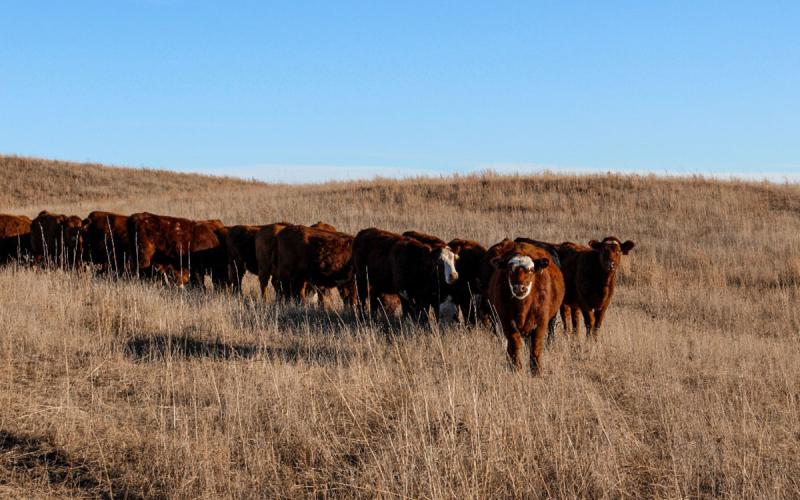
Written collaboratively by Kaylee Wheeler, Sarah Hamilton Buxton (Xerces Society for Invertebrate Conservation), Rae Powers (Xerces Society for Invertebrate Conservation), Jennifer Hopwood (Xerces Society for Invertebrate Conservation), Autumn Smart (Xerces Society for Invertebrate Conservation), Mitch Stephenson (University of Nebraska - Lincoln Extension), Kevin Sedivec (North Dakota State University Extension).
Rangelands of the Northern Great Plains are typically known and valued for their expansive waves of grass. However, native wildflowers and shrubs are also important and critical to providing a wide array of services that increase the resiliency of rangelands, provide pollinator habitat, and contribute to livestock nutrition.
Traditionally, some rangeland wildflowers have been viewed as undesirable, mistaken for invasive weeds, seen as competition for forage grasses, viewed as unpalatable for livestock, or potentially toxic. Consequently, thousands of rangeland acres receive aerial broadcast sprays of broadleaf herbicide to control non-grass plants, including invasive and problematic species. However, large scale sprays can have unintended consequences, such as eliminating non-target plants like wildflowers.
Wildflowers and shrubs are sources of protein, nutrients, and minerals for livestock, sometimes providing forage quality and minerals at levels greater than key forage grasses. Native wildflowers and shrubs also contribute to the overall health of rangelands by supporting soil health (e.g. via diverse rooting structures that facilitate water infiltration), increasing drought resiliency, and by providing wildlife and pollinator habitat.
Rangeland Wildflowers Guide

To help in understanding the vital role that wildflowers play in rangelands, the USDA NRCS, in collaboration with the Xerces Society, SDSU Extension, and other partners, created Rangeland Wildflowers: Their Value to Livestock and Pollinators. This guide is intended as a portable, accessible guide for recognizing common, and nutritionally important, wildflowers and shrubs found on rangelands of the Northern Great Plains. The boundary of the Northern Great Plains used in this guide was developed using Major Land Resource Areas (MLRAs) identified as grassland areas in North Dakota, South Dakota, Nebraska, Montana, Wyoming, and Minnesota. This guide shows the nutrition these plants can provide to livestock, and the ways these plants support pollinators.
This guide includes profiles of 19 rangeland wildflowers and shrubs, each containing:
- A species range map
- Photos and identification guidance
- Forage quality information
- Mineral content information
- How the plant supports pollinators
- Types of pollinators visiting flowers of the species.
The forage quality and mineral content data of wildflowers in this guide were collected as part of the Rangeland Wildflower Nutrition Project, a collaborative effort involving the USDA NRCS, Xerces Society for Invertebrate Conservation, North Dakota State University Extension, University of Nebraska – Lincoln Extension, South Dakota Grassland Coalition, and South Dakota State University Extension.
To download a digital copy of the guide, visit the Xerces Society website. Printed copies can also be requested by contacting Emily Rohrer, NRCS State Rangeland Management Specialist; or Kaylee Wheeler, SDSU Extension Range Field Specialist.


